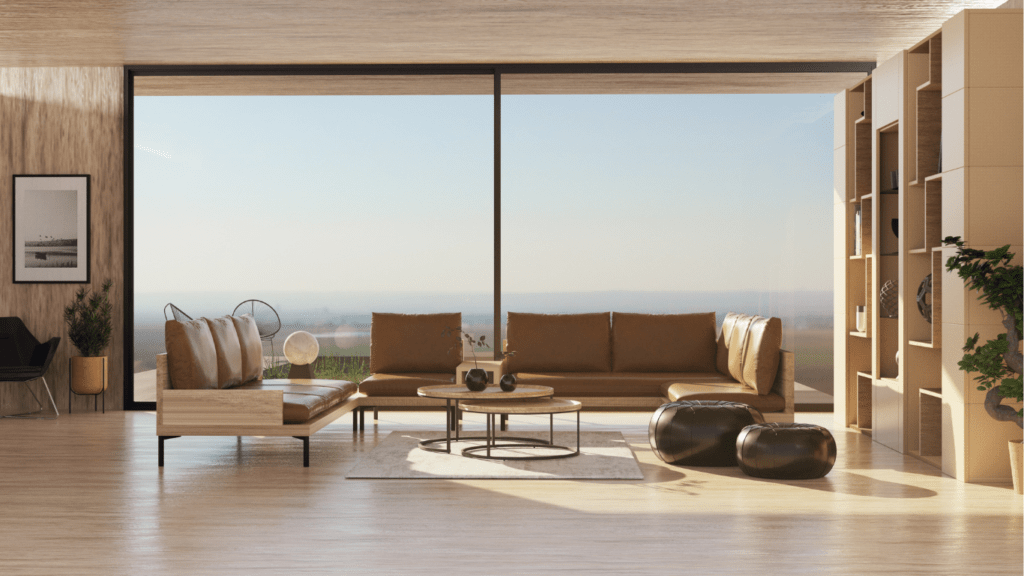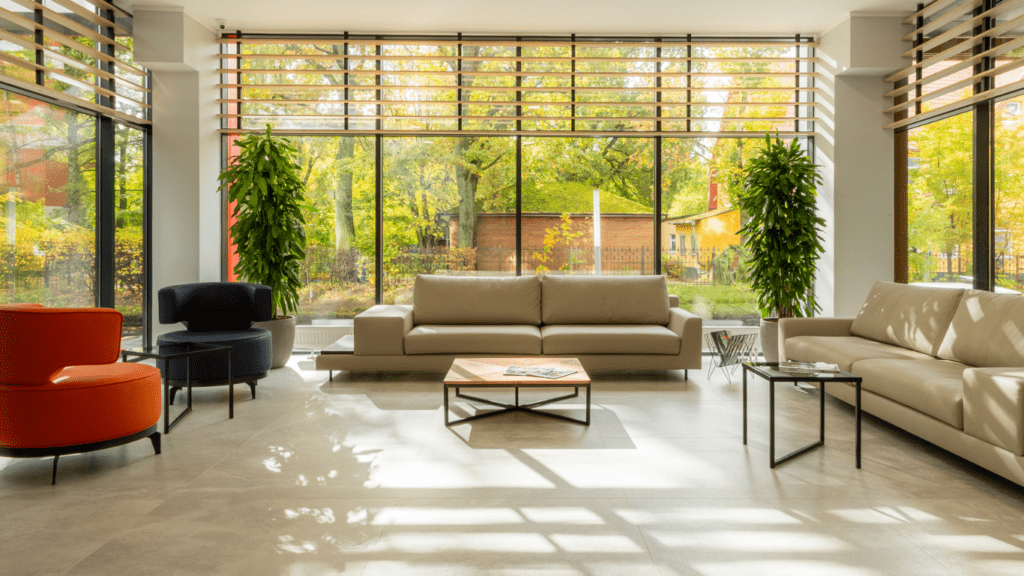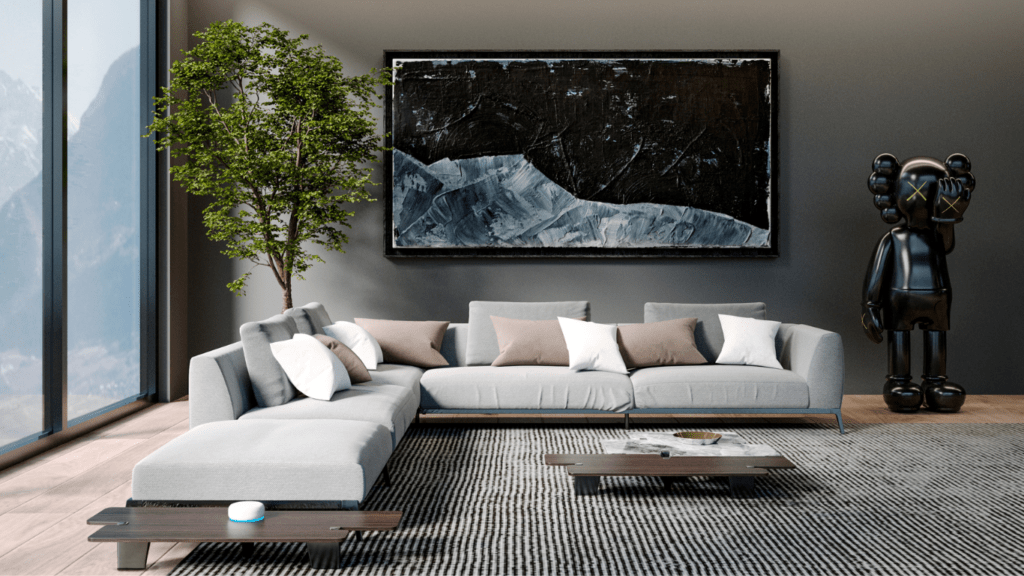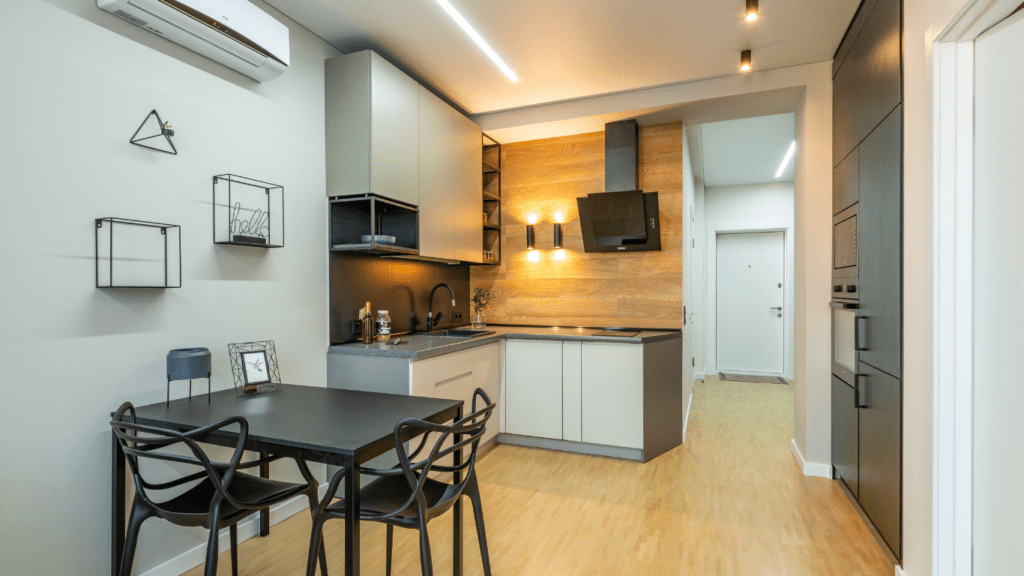Understanding Focal Points
A focal point is the central element in a room that draws attention and sets the tone for the space. It guides the visual flow and determines where the eyes naturally rest. The most common focal points include:
- fireplaces,
- large windows
- artwork
- statement pieces
Fireplaces automatically attract attention because of their warmth and central positioning. Large windows offer stunning views and natural light, making them natural focal points. Artwork, such as a large painting or a sculpture, captivates with its design and color. Statement pieces, including oversized furniture or unique decor, become conversation starters and anchor the room’s design.
To effectively create focal points, identify the primary element that should stand out. Arrange furniture and decor in such a way that this element remains the center of attention, ensuring it isn’t obstructed. By understanding focal points, arranging furniture becomes easier and more strategic, resulting in well-balanced and visually appealing spaces.
Choosing the Right Focal Point
Selecting the right focal point sets the foundation for a well-designed space. It serves as the anchor for your room, around which all other elements will revolve. Here’s how to identify and leverage natural and created focal points.
Natural Focal Points
Natural focal points are inherent to the room’s structure or its surroundings. Architectural features like fireplaces and large windows often dominate the space naturally. For instance, a fireplace, with its warmth and central position, becomes a natural gathering spot. Large windows offer views and fill the room with natural light, effortlessly catching the eye. In these cases, arrange seating and decor to emphasize these features. Align sofas and chairs around a fireplace or position furniture to face the window, ensuring unobstructed sightlines.
Created Focal Points
- If no natural focal point exists, you can create one to draw attention.
- Artwork, mirrors, and statement furniture pieces can become focal points with strategic placement. For example, a large piece of artwork on a blank wall instantly attracts attention.
- Mirrors not only serve as focal points but also reflect light, making the room feel larger.
- Statement pieces like unique coffee tables or bold-colored sofas add visual interest and serve as anchors.
- Arrange surrounding furniture to complement and highlight these elements.
- Place an area rug to ground a statement piece or use lighting to enhance the prominence of your created focal point.
By effectively choosing your room’s focal point, whether natural or created, you’ll ensure a balanced and visually appealing space.
Arranging Furniture for Emphasis

Arranging furniture strategically emphasizes focal points in each room. The layout influences how a space feels and functions, making it crucial for interior design.
Living Room Layout Ideas
In the living room, place furniture to direct attention toward the focal point. If the focal point is a fireplace, arrange seating around it in a semi-circular layout. Chairs and sofas should face the fireplace, creating a cozy, inviting atmosphere. For rooms with large windows as the focal point, position furniture to maximize outdoor views and natural light. Avoid obstructing windows with large pieces of furniture. Use rugs to define the seating area and add cohesion.
Bedroom Furniture Tips
Emphasizing focal points in the bedroom involves strategic bed placement. The bed, usually the main focal point, should face the entrance. This directs attention immediately upon entering the room. Nightstands and lamps on either side of the bed help create symmetry and balance. If the room has a large window, position the bed to take advantage of the view without blocking natural light. Place a bench or seating at the end of the bed for added functionality and style.
Dining Room Arrangements
In the dining room, the table serves as the focal point. Position the table centrally, ensuring ample space for movement around it. Chairs should symmetrically surround the table to maintain balance. If the room has a feature wall or artwork, align the table to draw attention to these elements. Use a chandelier or pendant light above the table to create a dramatic emphasis. A well-placed mirror can expand the space and reflect light, enhancing the room’s appeal.
Using Accessories to Enhance Focal Points
Accessories can significantly enhance a room’s focal point, adding depth and interest to the overall design. Here’s how to use lighting, artwork, and decor to draw attention to the key features of your spaces.
Lighting
Lighting plays a crucial role in highlighting focal points. Use different types of lighting to create layers and add dimension. For example, place accent lights on either side of a fireplace. If you have a piece of artwork as the focal point, install picture lights above it. Table lamps and floor lamps provide additional layers of light. They can be placed near seating arrangements to draw the eye toward the central area. Dimmer switches offer flexibility, allowing you to adjust light levels according to the mood.
Artwork and Decor
Artwork and decor add personality and can enhance focal points if coordinated well. Choose artwork that complements the room’s style and color scheme. Large pieces of artwork or a gallery wall above a sofa or fireplace naturally draw attention. Statement decor objects, like vases and sculptures, can be placed on mantels or side tables. Mirrors also amplify focal points by reflecting light and space. Position a mirror opposite a window or feature piece to create added visual interest. Grouping decor items in odd numbers creates a balanced yet dynamic look.
Common Mistakes to Avoid
When arranging furniture around your home, certain mistakes can diminish the impact of your focal points. Avoid these common pitfalls to maintain a harmonious and functional space.
Overcrowding Spaces
Too much furniture in one area can disrupt the room’s balance. Crowding diminishes the focal point’s prominence and makes the space feel cramped. Stick to essential pieces and prioritize quality over quantity.
Ignoring Traffic Flow
Ignoring how people move through a space can create obstacles and diminish functionality. Ensure there’s a clear path for movement, especially in high-traffic areas. Arrange furniture with space considerations, keeping pathways unobstructed.



 Betsylie Sheetsin – Home Renovation Expert
Betsylie Sheetsin serves as the Home Renovation Expert at Castle Shelf House, specializing in giving practical advice for both small and large-scale home improvements. With years of experience in construction and renovation, Betsylie understands the importance of blending durability with design. Her insights into home renovation projects, along with expert advice on the latest materials and techniques, empower homeowners to tackle even the most ambitious projects confidently.
Betsylie Sheetsin – Home Renovation Expert
Betsylie Sheetsin serves as the Home Renovation Expert at Castle Shelf House, specializing in giving practical advice for both small and large-scale home improvements. With years of experience in construction and renovation, Betsylie understands the importance of blending durability with design. Her insights into home renovation projects, along with expert advice on the latest materials and techniques, empower homeowners to tackle even the most ambitious projects confidently.
